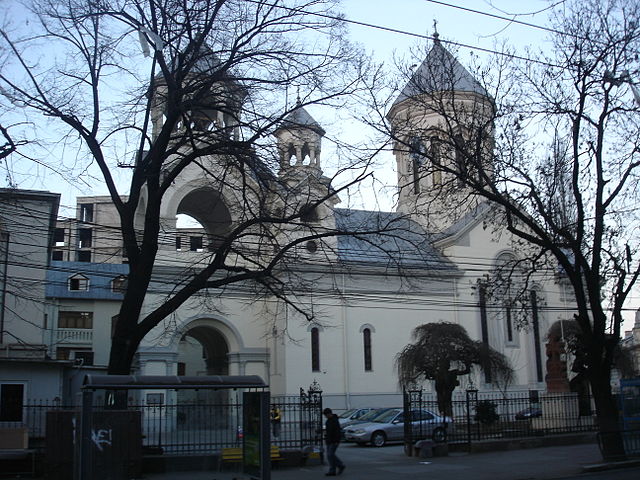Armenians have been present in what are now the states of Romania and Moldova for over a millennium, and have been an important presence as traders since the 14th century. Numbering only in the thousands in modern times, they were culturally suppressed in the Communist era, but have undergone a cultural revival since the Romanian Revolution of 1989.
Armenian Church in Bucharest
Armenian Catholic Holy Trinity Cathedral in Gherla
Zamca Monastery in Suceava
Armenian Church in Iași
Armenians are an ethnic group and nation native to the Armenian highlands of West Asia. Armenians constitute the main population of the Republic of Armenia and constituted the main population of the breakaway Republic of Artsakh until the 2023 Azerbaijani offensive in Nagorno-Karabakh and the subsequent flight of Nagorno-Karabakh Armenians. There is a wide-ranging diaspora of around five million people of full or partial Armenian ancestry living outside modern Armenia. The largest Armenian populations today exist in Russia, the United States, France, Georgia, Iran, Germany, Ukraine, Lebanon, Brazil, Argentina, Syria, and Turkey. The present-day Armenian diaspora was formed mainly as a result of the Armenian genocide with the exceptions of Iran, former Soviet states, and parts of the Levant.
Hayk, the legendary founder of the Armenian nation. Painting by Mkrtum Hovnatanian (1779–1846)
The Cathedral of Ani, completed in 1001
Ptolemy, Cosmographia (1467)
Persis, Parthia, Armenia. Rest Fenner, published in 1835.








